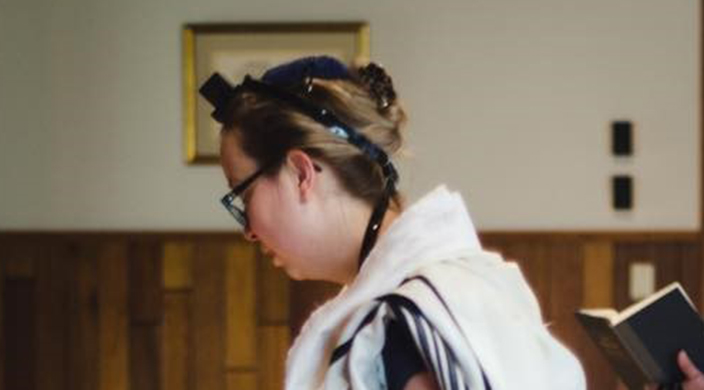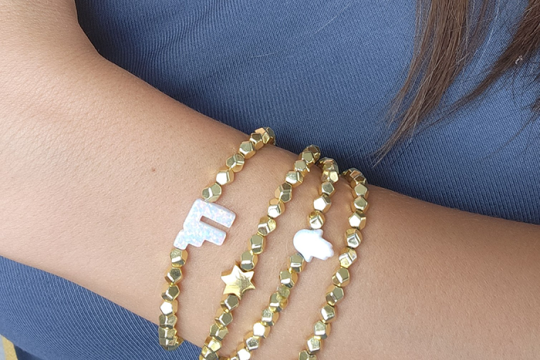
Do an internet search for “Jewish” and you’ll be inundated with photos of bearded men in Jewish ritual garb, but this picture – a 40-year-old blonde female-identifying rabbi – is also what Jewish looks like.
I started wearing a and laying 15 years ago. It has taken me years to get over my internalized judgment as a woman wearing these items that are “traditionally” worn only by men. Even on the best of days, tefillin are a strange and uncomfortable feature of Jewish practice. I’ve had to consciously push myself beyond my own discomfort to own this that has come to mean so much to me.
Like many Jews who have invested in a practice, mine has waxed and waned over the more than 15 years I’ve been davening regularly. It’s ranged from thrice daily, as per the classical obligation, to months of not picking up a weekday save for Shabbat services; from wrapping tefillin in odd places (the strangest being a storage closet) to sisterly praying side-by-side with a Muslim woman in the Amsterdam airport chapel. My tallit and tefillin have traveled to unexpected places. I have wrapped covertly when davening with Women of the Wall at the Kotel in Jerusalem. I’ve prayed on vacations in Cuba and the Finnish Arctic Circle and with a heart brimming with poignant emotions overlooking East Berlin.
I have loved prayer and dreaded it, prayed out of obligation and joy, whispered these words with passion, and mumbled them with rote boredom. None of this is meant to be simple; all of this is meant to be an ever-evolving and enduring relationship with God and self.
I bought my tallit in the Netherlands, my home country. The little Judaica shop had only three traditional types for sale, and the stark juxtaposition of the white on black spoke to me. The white, after years of intense use and regular washing, is fading to yellow. It’s been with me almost a generation of my life. I bought my tefillin with a male friend in Mea Shearim in Jerusalem. He was my decoy for a “clandestine” purchase by a woman. The straps are now soft and supple from regular use.
I have experienced so many unusual, amusing, challenging, and moving encounters with these ritual objects. Israeli security guards at Ben Gurion Airport had their perceptions realigned as to why a woman would carry these items in the first place. Tears of pain and of joy have been cried into this tallit. I prayed with these objects on the mornings of my wedding and my rabbinic ordination. And one day, I will be buried in this tallit.
Like any Jew, I have a right to develop my own unique and personal relationship with my tallit and tefillin. I bind myself with the words of Torah in my tefillin’s boxes; the Shechinah (Divine Presence) embraces me through the fringes of my tallit, embodying a relationship that is authentic despite gender and status politics, denominational bickering, or my own spiritual frailty. They are my companions through this journey called life. They are both my teachers and my teaching tools, and I take pride that I’ve shown women (and some men) how to wrap.
I embrace these mitzvot wholeheartedly and take pride in what they have come to represent in my life: embodied holiness. They remind me of the uncompromising message of my infinite worth as a human being created , whether or not I feel awkward or unlovely; no matter how the years fade my youth; and regardless of our culture’s toxic messages about what a woman should look like or be – or what a Jew should look like or be.
This journey of the excavation of my soul has taught me this much: I doubt God’s existence as much as I affirm my faith. As a modern religious woman, I live with this dynamic tension. Still, whenever I pick up my siddur, I know I’m woven into the fabric of the universe. I know I am a minute link in an amazing, vibrant, resilient tradition bound to my people. I know, most of all, God is close and adores me with a great and enduring love.
Indeed, I am what Jewish looks like.
To learn more about tallitot, tefillin, and other Jewish prayer garb, see "What You Should Know about Jewish Prayer Garb."
Related Posts

No Holiday Dilemma this December

Wearing Strength: Jewelry as a Symbol of Jewish Resilience

